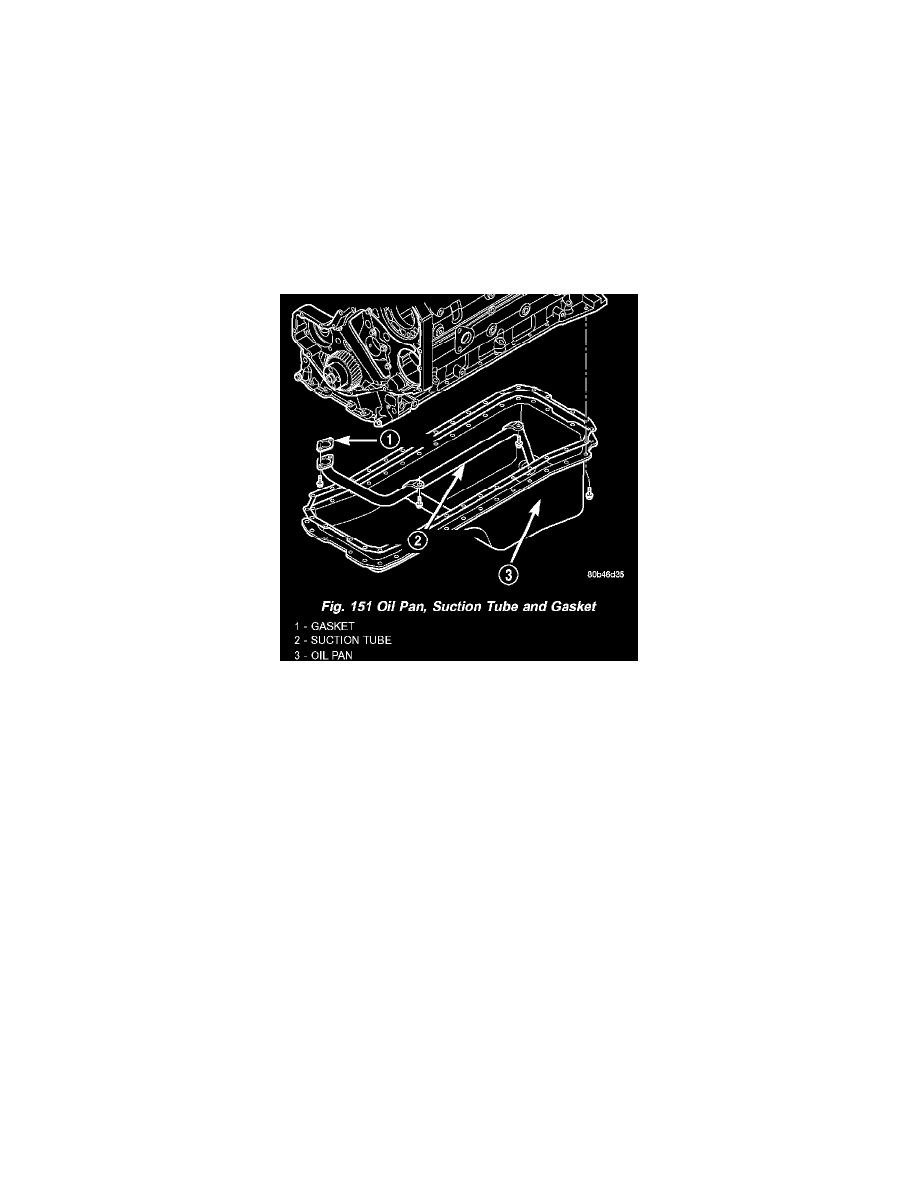RAM 3500 Truck 2WD L6-5.9L DSL Turbo VIN 7 (2002)

Oil Pan: Service and Repair
REMOVAL
1. Disconnect the battery negative cables.
2. Raise vehicle on hoist.
3. Remove transmission and transfer case (if equipped).
4. Remove flywheel.
5. Disconnect starter cables from starter motor.
6. Remove starter motor and transmission adapter plate assembly.
WARNING: HOT OIL CAN CAUSE PERSONAL INJURY.
7. Drain the engine oil.
8. Install the oil pan drain plug with a new sealing washer and tighten to 60 Nm (44 ft. lbs.) torque.
9. Remove oil pan bolts, break the pan to block seal, and lower pan slightly and remove oil suction tube fasteners.
10. Remove oil pan and suction tube (Fig. 151).
CLEANING
Remove all gasket material from the oil pan and cylinder block sealing surfaces. Extra effort may be required around T-joint areas. Clean oil pan and
flush suction tube with a suitable solvent.
INSPECTION
Inspect the oil pan, suction tube, and tube braces for cracks and damage. Replace any defective component. Inspect the oil drain plug and drain hole
threads. Inspect the oil pan sealing surface for straightness. Repair any minor imperfections with a ball-peen hammer. Do not attempt to repair an oil
pan by welding.
INSTALLATION
1. Fill the T-joint between the pan rail/gear housing and pan rail/rear seal retainer with sealant. Use Mopar Silicone Rubber Adhesive Sealant or
equivalent.
2. Apply a film of Mopar Silicone Rubber Adhesive Sealant or equivalent to the oil pan gasket. Apply sealant only to the side that faces the oil pan.
3. Place suction tube in oil pan and guide them into place (Fig. 151). Using a new tube to oil pump gasket, install and tighten the suction tube bolts
by hand. Starting with the oil pump inlet bolts, tighten the bolts to 24 Nm (18 ft. lbs.) torque. Tighten the remaining tube brace bolts to 24 Nm (18
ft. lbs.) torque.
4. Starting in the center and working outward, tighten the oil pan bolts to 24 Nm (18 ft. lbs.) torque.
5. Install the flywheel housing assembly with the starter motor attached and tighten bolts to 60 Nm (44 ft. lbs.) torque.
6. Connect starter motor cables.
7. Install transmission and transfer case (if equipped).
8. Lower vehicle.
9. Install battery negative cables.
10. Fill the crankcase with new engine oil.
11. Start engine and check for leaks. Stop engine, check oil level, and adjust, if necessary.
